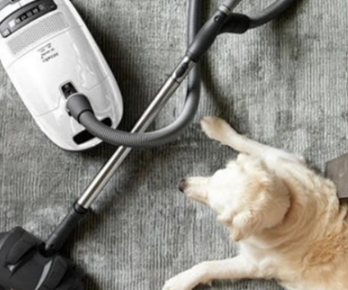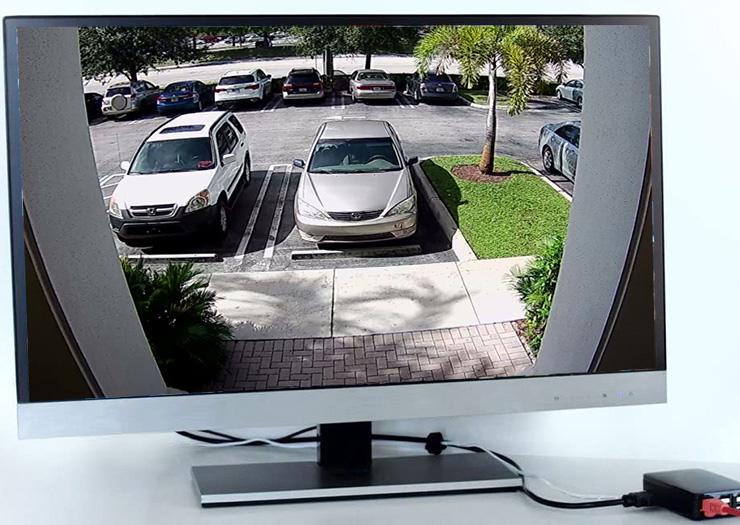What Daily Habits Shorten Vacuum Life?
Vacuum cleaners represent a significant household investment, yet many fail long before their expected lifespan. The average homeowner unknowingly engages in daily practices that gradually degrade the...
30/06/2025
Vacuum cleaners represent a significant household investment, yet many fail long before their expected lifespan. The average homeowner unknowingly engages in daily practices that gradually degrade their vacuum's performance and durability. These small mistakes accumulate over time, leading to clogged airways, burnt-out motors, and broken components that could have been easily avoided. Understanding these destructive habits is the first step toward extending your vacuum's service life and maintaining its cleaning power. In this article, we'll reveal the seven most common vacuum-damaging behaviors and provide practical solutions to keep your machine running like new for years to come.

1. Overworking the Motor
Running your vacuum continuously for extended periods creates excessive heat that degrades motor components over time. The insulation around motor windings breaks down when subjected to prolonged high temperatures, eventually leading to complete motor failure. Many users make the mistake of vacuuming their entire home in one session without giving the machine adequate cooling breaks. For optimal motor life, limit cleaning sessions to 15-20 minutes at a time, then allow the vacuum to rest for 5-10 minutes before continuing. This is especially crucial when cleaning large areas or dealing with heavy debris like pet hair. Additionally, using the wrong power setting for your floor type forces the motor to work harder than necessary - high-pile carpets need maximum suction while hard floors perform better with reduced suction to prevent scattering debris.
2. Poor Emptying Practices
Neglecting to empty the dust container regularly creates multiple problems that shorten your vacuum's life. When the collection bin exceeds 2/3 capacity, airflow becomes restricted, forcing the motor to work harder while reducing cleaning efficiency. Fine dust particles begin bypassing the filter system, coating internal components and causing premature wear. Worse still, compressed debris in a full bin can develop moisture from household humidity, creating a breeding ground for bacteria and mold that contaminates your home with each use. For bagless models, always empty the container after every cleaning session or when it reaches the halfway mark. Bagged systems require replacement when 3/4 full - never try to overstuff bags as this damages the vacuum's airflow system. Always empty outdoors to avoid redistributing dust inside your home.

3. Wrong Brush Roll Use
Engaging the brush roll on hard flooring creates unnecessary wear on both the bristles and floor surfaces. The rapid spinning action causes bristles to flatten and break when used on tile, wood, or laminate floors, reducing their effectiveness for carpet cleaning. Simultaneously, the hard bristles can scratch and dull delicate hardwood finishes. Many modern vacuums feature automatic brush roll shutoff for hard floors - always use this setting when transitioning from carpeted areas. For models without this feature, manually turn off the brush roll. Regular maintenance is equally important - clean wrapped hair and threads from the brush roll after every use to prevent motor strain and maintain proper rotation speed.
4. Cord & Battery Abuse
Improper cord handling ranks among the top causes of vacuum failure. Yanking the cord from the outlet by the wire instead of the plug damages internal connections and can eventually cause short circuits. Wrapping the cord too tightly around storage hooks creates weak points that lead to fraying over time. For corded models, always unplug by grasping the plug itself and loosely loop the cord for storage. With cordless vacuums, battery care dramatically affects longevity. Allowing lithium-ion batteries to fully discharge regularly reduces their capacity - try to recharge when about 20% power remains. Never store cordless vacuums with completely drained batteries, as this can permanently damage cells. Heat is another battery killer - avoid leaving cordless vacuums in hot cars or direct sunlight for extended periods.
5. Ignoring Basic Maintenance
Filter maintenance represents the most overlooked yet crucial aspect of vacuum care. Clogged filters restrict airflow, forcing the motor to work harder while drastically reducing suction power. Washable filters should be cleaned monthly and completely dry before reinstallation - damp filters allow dust to clump and block airflow. Disposable filters require replacement every 3-6 months depending on usage. The brush roll area needs weekly inspection for tangled hair and debris that inhibit rotation. Check the vacuum's underside monthly for obstructions in the air pathway and remove any accumulated debris. Belt replacements should occur every 6-12 months or immediately if you notice the brush roll not spinning properly. These simple maintenance tasks take minutes but can add years to your vacuum's lifespan.
6. Fixing Bad Habits
Breaking vacuum-damaging habits requires conscious effort but pays dividends in extended machine life. Create a pre-cleaning checklist: inspect filters, clear brush roll obstructions, and select appropriate settings for your flooring. Establish a maintenance calendar with monthly filter cleanings and seasonal deep cleanings of all vacuum components. When purchasing a new vacuum, read the manual thoroughly - most premature failures result from ignoring manufacturer guidelines. Store your vacuum properly by coiling cords loosely, emptying canisters, and keeping it in a dry, temperature-controlled area. Consider setting usage reminders if you tend to forget maintenance schedules.
Conclusion
With proper care, most quality vacuums should last 8-10 years, though how long do vacuum cleaners last ultimately depends on usage patterns and maintenance. To maximize your machine's lifespan, always: empty containers before they're half full, clean filters monthly, remove brush roll debris after each use, and give motors cooling breaks during extended cleaning sessions. Avoid vacuuming large hard objects that can damage internal mechanisms, and always use the correct settings for your floor type. Those looking for reliable cleaning tools might consider products like eufy's vacuum line designed for durability and ease of maintenance. By implementing these practices today, you'll enjoy stronger suction, fewer repairs, and ultimately save money by extending your vacuum's usable life for years to come.




